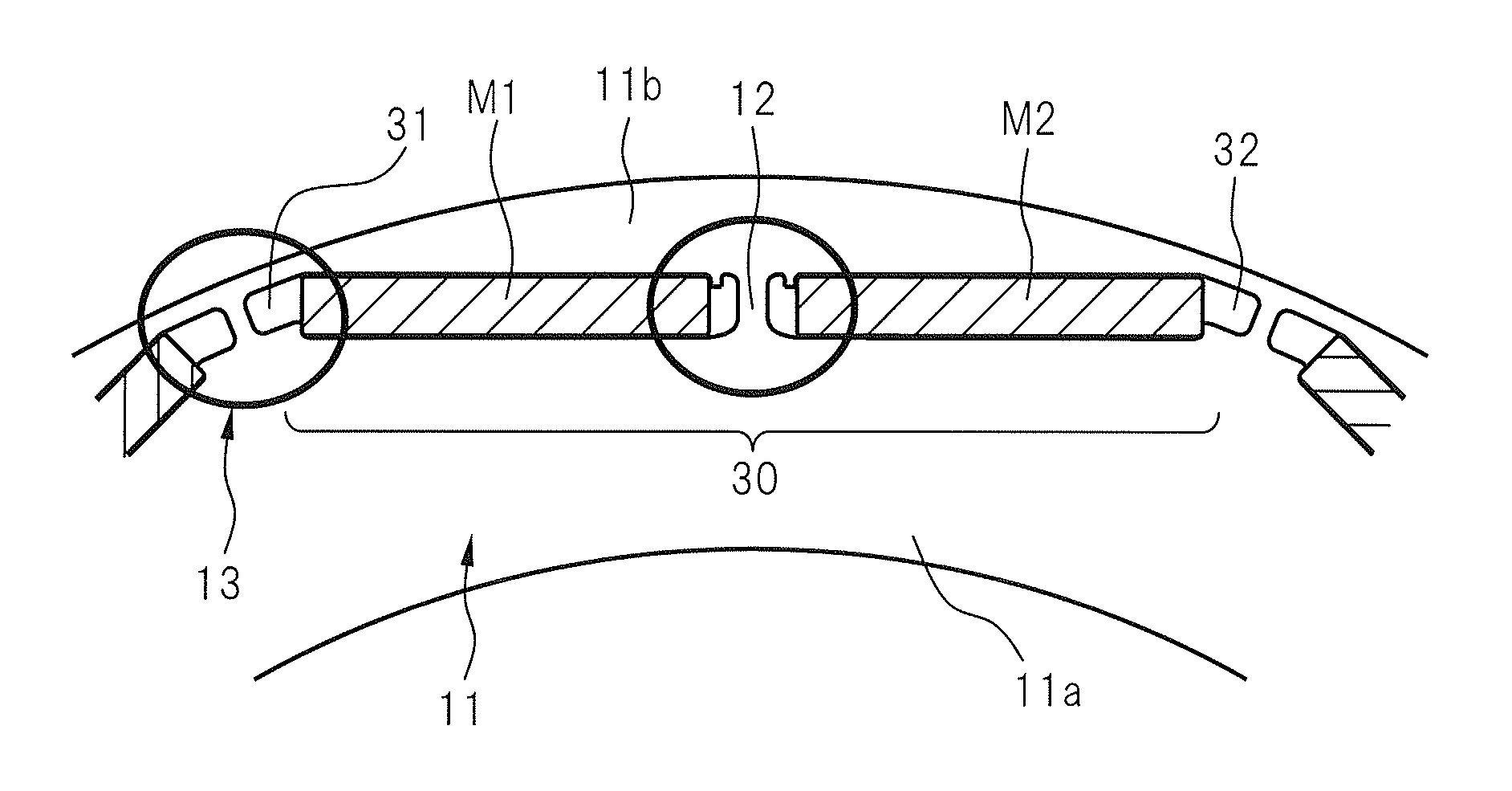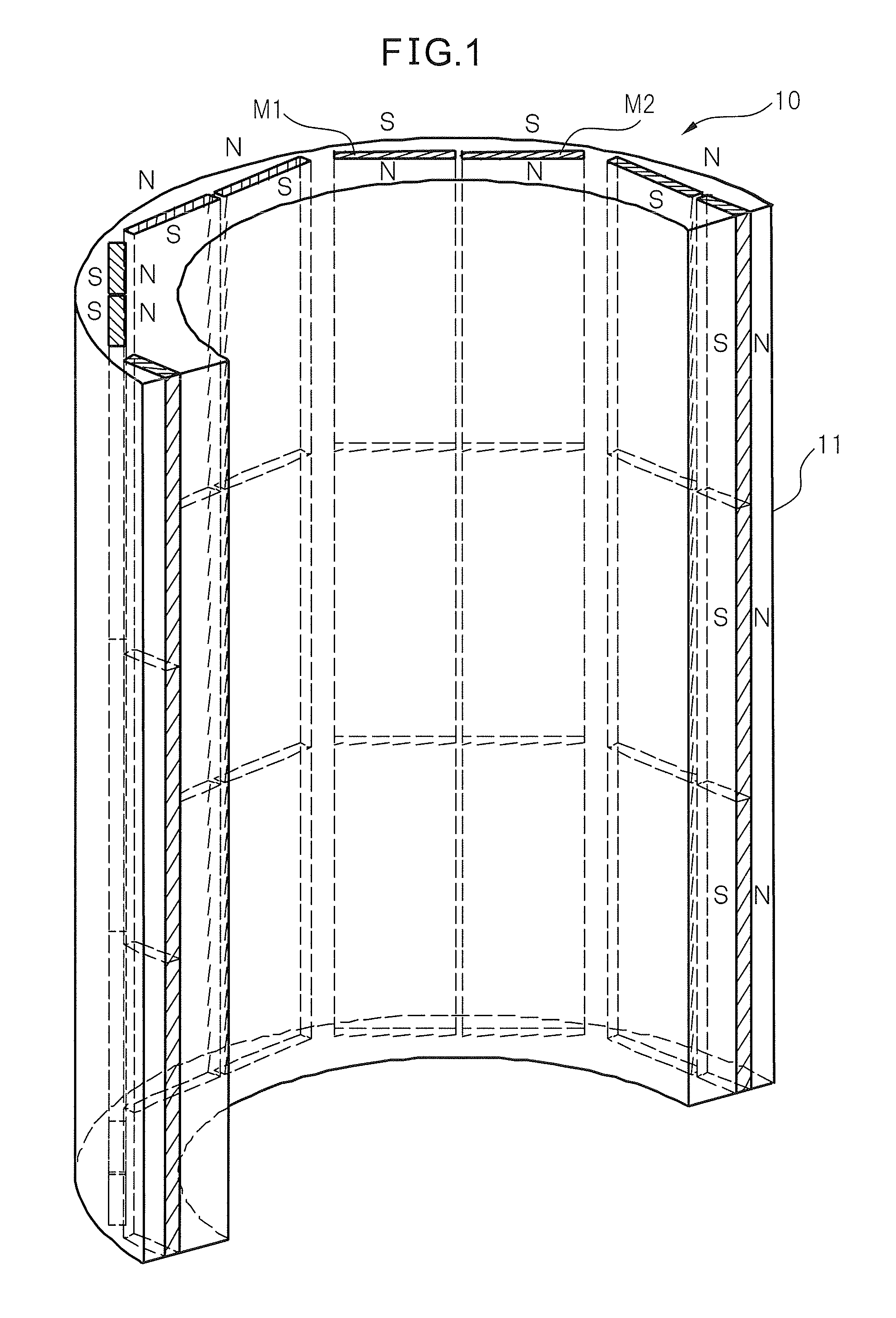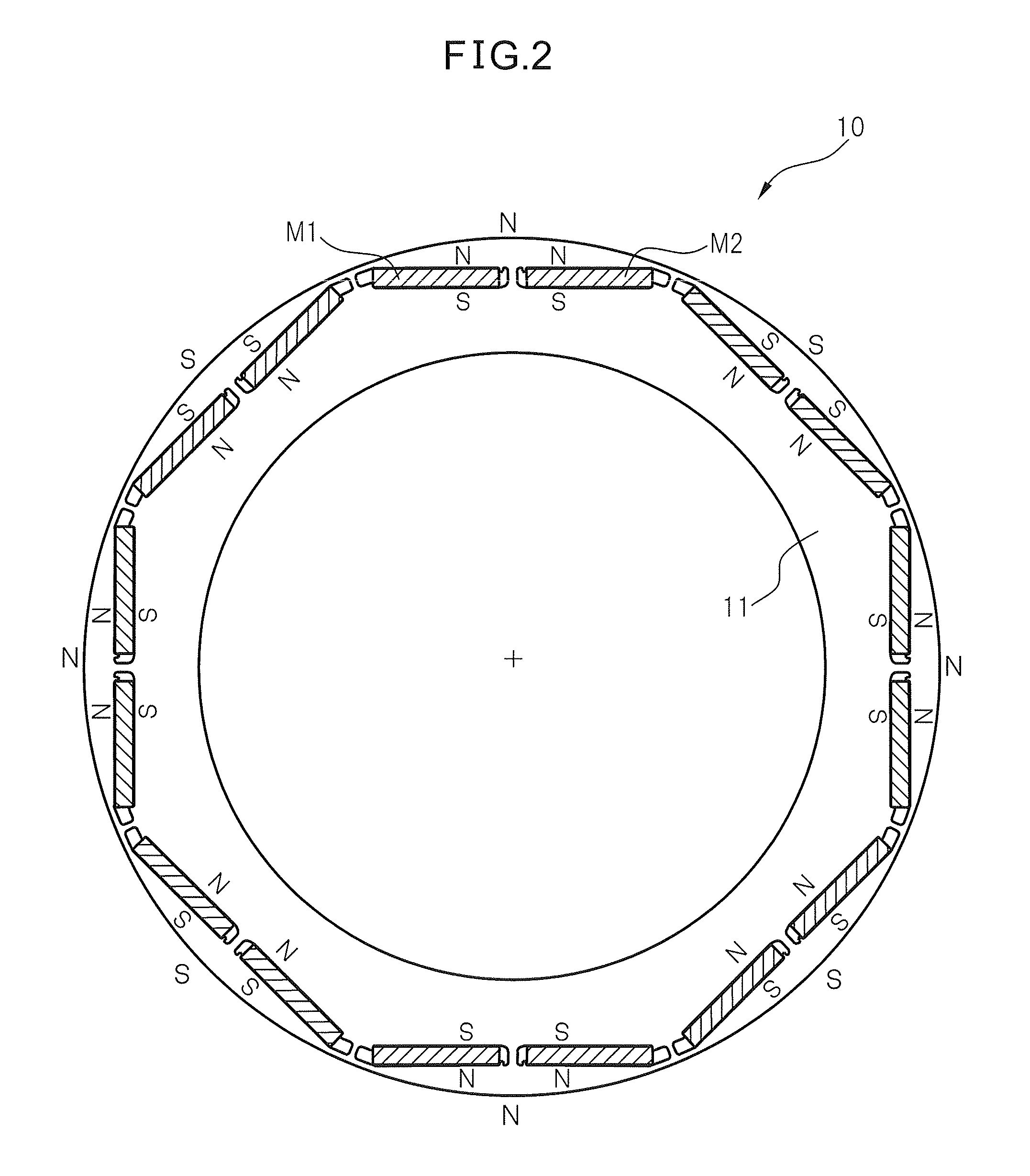Rotor of buried magnet-type electric motor, motor and machine tool having the rotor
a buried magnet type, electric motor technology, applied in the direction of dynamo-electric machines, magnetic circuit rotating parts, magnetic circuit shape/form/construction, etc., can solve the problems of low rigidity of the main shaft, affecting the dimensional precision, surface roughness and appearance of the workpiece, and the stress as a whole tends to increase on the side of the rotary sha
- Summary
- Abstract
- Description
- Claims
- Application Information
AI Technical Summary
Benefits of technology
Problems solved by technology
Method used
Image
Examples
first embodiment
[0085]FIG. 5 is a view illustrating the invention. In FIG. 5, two arcs of different sizes are forming the curved portion 41. The curved portion 41 formed of the two arcs assumes a simple shape, produces the above-mentioned effect to a large extent and provides practicability to a high degree. Further, specifically preferred state of connection include such relations as two arcs are connected to each other, an arc is connected to the lower edge 31a of the magnet slot 31, and the arc is connected to the outer edge of the core portion 12 between the magnet slots of the same pole.
[0086]As can be seen from FIG. 5, the bottom edge 31a of the magnet slot 31 is a tangential line of a first arc of R2.8 (radius of 2.8 mm, hereinafter the same). Then, the first arc of R2.8 is connected to a second arc of R0.8. In other words, the center of the second arc of R0.8 is present on a line of radius R2.8 that passes through a point of connection of the first arc and the second arc. In FIG. 5, further...
second embodiment
[0087]FIG. 6 is a view illustrating the invention. In FIG. 6, a curve is formed by the outer edge of the core portion 12 between the magnet slots of the same pole. A first arc of R2.8 connects to the bottom edge 31a of the magnet slot 31, a second arc of R0.8 connects to the first arc and, further, an arc of R5 connects to the second arc, the arcs forming the outer edge of the core portion 12 between the magnet slots of the same pole.
third embodiment
[0088]FIG. 7 is a view illustrating the invention. FIG. 7 shows another curved portion 41 of which the curvature is gradually increasing from the bottom edge 31a up to the outer edge of the core portion 12 between the magnet slots of the same pole. The curved portion 41 shown in FIG. 7 is corresponding to a quarter of an ellipse that has a long axis of 3.2 mm and a short axis of 1.8 mm. As can be seen from FIG. 7, the bottom edge 31a of the magnet slot 31 and the linear outer edge of the core portion 12 between the magnet slots of the same pole are serving as tangential lines to the quarter of the ellipse.
[0089]If a change in the curvature of the embodiment of FIG. 7 is regarded as a gradient of the tangential line, the gradient of the tangential line is 0° at a point of connection to the bottom edge 31a of the magnet slot 31. Then, the gradient of the tangential line monotonously increases toward the outer edge of the core portion 12 between the magnet slots of the same pole. The g...
PUM
 Login to View More
Login to View More Abstract
Description
Claims
Application Information
 Login to View More
Login to View More - R&D
- Intellectual Property
- Life Sciences
- Materials
- Tech Scout
- Unparalleled Data Quality
- Higher Quality Content
- 60% Fewer Hallucinations
Browse by: Latest US Patents, China's latest patents, Technical Efficacy Thesaurus, Application Domain, Technology Topic, Popular Technical Reports.
© 2025 PatSnap. All rights reserved.Legal|Privacy policy|Modern Slavery Act Transparency Statement|Sitemap|About US| Contact US: help@patsnap.com



